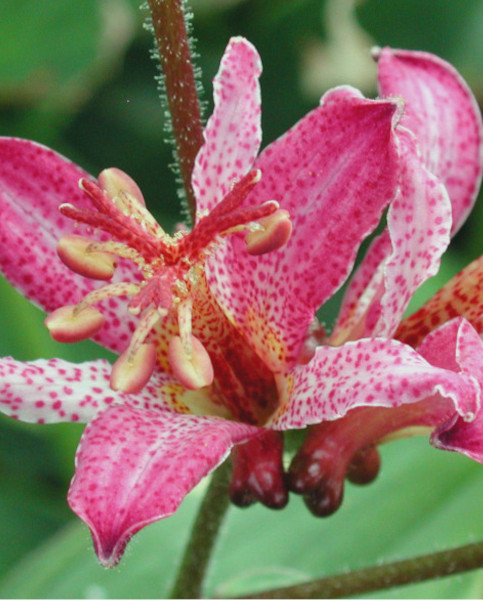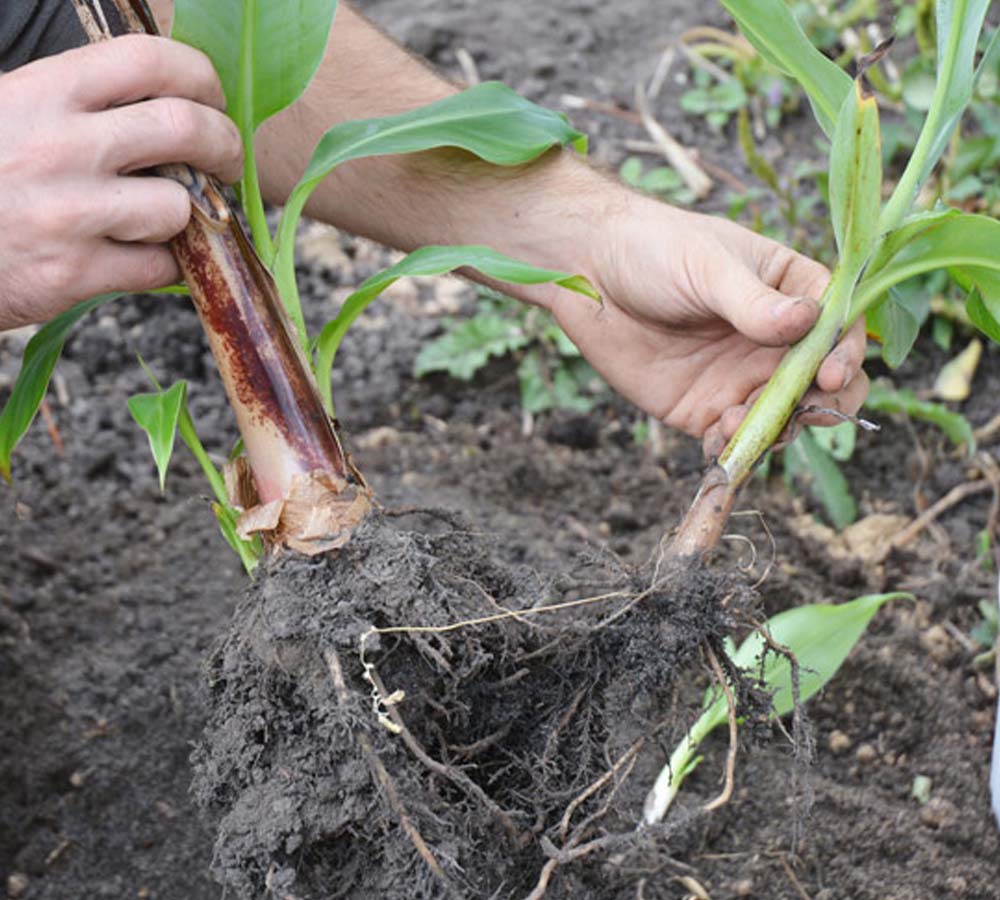How to grow Trillium Luteum
Trillium luteum lives up to its name - ‘tri’ stems from the Greek and Latin terms for three. Trillium grows three leaves and three flowers and is an ephemeral beauty - in its native Great Smoky Mountains it automatically adjusts its life cycle to the surrounding forestry.
With a mature height of 60cm and a 30cm spread, Trillium luteum is low growing. Trillium luteum has three broad green leaves with silver touches and three upright petals on the ‘shelf’ of foliage. Its flowers come with a soft lemon scent which is attractive to pollinators.
While Trillium can be tricky to grow and takes up to 5 years to reach full maturity - Trillium luteum has received the Royal Horticultural Society (RHS) Award of Garden Merit. This means Trillium luteum grows well under UK growing conditions and should thrive when given the right conditions.
Ready to find out more about these silvery-green, lemon-scented beauties? Read on to learn everything you need to know about Trillium luteum...
Key Information
Soil pH
Position
Hardiness

Where & when to plant Trillum Luteum
As a low-growing perennial with heights of 60cm, Trillium luteum is a good plant for the front of a shady border or flower bed. Plant in the late summer for best results, ideally in a raised mound of soil or an area with deep soil to help its roots establish and spread. If you plant your Trillium luteum in summer, keep an eye on the position’s exposure to sunlight as Trillium will struggle in too much sunlight and needs plenty of shade.
How to plant Trillium Luteum
If you are planting Trillium luteum in a border or flower bed, raising the soil can help create deep soil where this might not otherwise be possible. A viable mound can be created at a height between 7-10cm, and this will give Trillium access to well-draining soil as well as plenty of space for its roots to stretch
Choose a position at the front of a border or a bed with plenty of shelter. Remember that Trillium needs partial sun, so do not plant in a position with direct sunlight or more than 4 hours of sunlight per day
Once you have found the perfect spot, create the mound of soil. You can add chalk or sand to it to support drainage. Bury the root ball in the soil ensuring it is fully covered
Water in once planted to settle the plant and water regularly, particularly during the initial growth period.
What to plant with Trillium Luteum
When considering neighbouring plants for Trillium luteum, think about its height and need for shelter. When grown in a border, it should be placed at the front and, due to Trillium’s ephemeral nature, we recommend you choose similar plants to grow alongside such as Tricytis. Hardy shrubs such as robust Alchemilla mollis and Hydrangea aspera add colour and thrive in shady and sheltered borders with moist, well-draining soil too.

How to care for Trillium Luteum
Pruning & Deadheading
Trillium luteum is relatively self-sufficient although you can help it along by trimming back the flowers once the flowering season is over. Remember to remove dead, diseased or damaged leaves where necessary.
Watering
Trilliums in general enjoy deep, well-draining soil. You can add chalk, loam or sand to your soil to make sure it drains thoroughly. Water regularly and be mindful of root rot (more on this below). In periods of drought or heat, water more often.
Cold Protection
A fully hardy perennial, Trillium luteum can handle temperatures as low as -15°c ! Trillium luteum dies back over the winter and an annual mulching in early spring will help healthy re-growth.
Pests & Diseases
The main pests to look out for with Trillium luteum are snails and slugs. Characterised by silver trails and irregularly shaped holes in leaves. Remove damaged leaves and put some pest control measures in place to inhibit them returning. Root rot is a disease caused by overwatering; this can be prevented with well-draining soil.
How to propagate Trillium Luteum
As a plant which can take several years to establish, you should propagate your Trillium luteum by division rather than seed to speed up the process.

Once the flowers have wilted and been cut back from the current season, choose a healthy parent plant to take your divisions from. Gently pull the full parent plant from the soil and use a clean cutting tool to take a root clump from the parent. You can cut up to ⅓ of the plant away without causing significant damage to the parent, but do not take more than this away. Re-plant your parent as soon as possible

Add your division cutting to a pot with suitable cuttings compost and slow-release fertiliser. For multiple cuttings, you will need to plant each in their own pot to allow them plenty of space to spread their roots. You can bring the cuttings indoors or leave them in a sheltered position outside, away from direct sunlight, rain and wind

As your cuttings grow, check in regularly and re-pot into bigger pots until they are ready to go outdoors. Plant in the late summer into deep, well-draining soil with plenty of cover and shade - bigger plants, trees and shrubs can provide this.
Common Trillium Luteum Questions
How do you grow Trillium luteum?
Trillium luteum thrives in moist, well-drained soil in a spot with partial shade. Trilliums need room to spread, so do not plant them too close to other plants. Plant Trillium luteum in the late summer months for the best results.
Does Trillium go dormant?
Yes, Trillium is a deciduous perennial plant which means it dies back each autumn-winter and grows back each spring. You can encourage healthy regrowth by mulching once a year - ideally in the early springtime once frost has passed.
Does Trillium luteum like sun or shade?
Trillium luteum thrives in partial shade. So, make sure that yours is planted in a position that experiences no more than 4 hours of sunlight per day.




